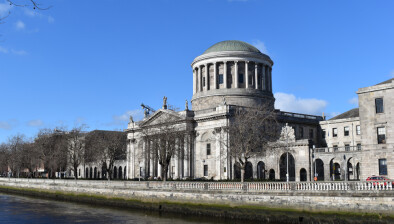FLAC: Consumer over-indebtedness could follow on heels of Covid-19 pandemic

Eilis Barry
Legal rights group FLAC has warned in a new report of consumer over-indebtedness becoming a long-term problem in the wake of the Covid-19 pandemic.
The third of four papers in FLAC’s From Pillar to Post series examines issues arising in new and existing consumer debt cases following the pandemic, based on analysis of data from the Central Bank of Ireland and the Banking and Payments Federation of Ireland (BPFI).
Central Bank data suggests that one in ten borrowers sought a payment break on their family home mortgage from the five main retail banks in the first two months of the pandemic. Over half of these breaks involved borrowers who drew down their mortgages between 2004 and 2008, a time when property prices were inflated and when unsustainable multiples of the borrower’s income were lent by banks.
The research further suggests that borrowers who borrowed higher multiples of their income (i.e. had a high loan to income ratio) were twice as likely to have a payment break. Critically, these numbers do not include mortgages owned or serviced by credit servicing or retail credit firms, who collect payments on behalf of vulture and other funds and who service significant numbers of mortgages in arrears.
Some of these borrowers are now between 50 and 60 years old. Many will have a history of arrears and forbearance.
Recent research from the Central Bank suggests that one-quarter of long-term mortgage arrears borrowers over 60 years old who are engaging with their lender have minimal “future income generation capacity”.
Overall, according to the BPFI, one in nine accounts that availed of a mortgage payment break did not return to full payments by the end of 2020 and these borrowers were said to be “receiving other forms of lender support”, indicating that payment difficulties had persisted in these cases.
Payment breaks on unsecured consumer credit agreements numbered almost 36,000 in 2020 and half of these did not resume full repayments by the end of the year, but returned to “payments on an extended term”.
Eilis Barry, chief executive of FLAC, said: “The publication of this paper is very timely. As we emerge from the pandemic, a full resumption of economic activity gets underway and a return to work is envisaged, this is a critical time to reassess the damage that may have been done to households in terms of personal finances and the dangers of over-indebtedness that may result.”
She added: “We need more solid data in order to create policies that will protect vulnerable households from further stress following the pandemic. The information provided in the payment break data thus far is limited in detail and is compounded by a failure to update the position of the households affected into 2021.”
Paul Joyce, senior policy analyst at FLAC and one of the lead authors of the report, said: “The sudden and significant spike in energy and other costs of living heading into the winter months may leave many consumers vulnerable.
“The payment break evidence suggests that a number of consumers have suffered an inability to pay both secured and unsecured loans during 2020 and there is little concrete information available on accounts that have encountered further payment problems in 2021.
“With the further phasing out of payment supports in progress, the reality is that for some, financially affected by Covid, difficulties may become more long term than short term, with those marginalised and in more precarious employment more likely to face persistent over-indebtedness.”
He added: “Although the impact on households is not likely to be on the scale of that following the global financial crisis, we must learn from past mistakes and ensure that the distress of Covid is not followed by the stress of unresolved over-indebtedness.
“In order to ensure this, we need speedy and accessible support services for those in difficulty, up-to-date and reliable data, decisive resolution mechanisms, and vigilant and pro-active regulation.”







